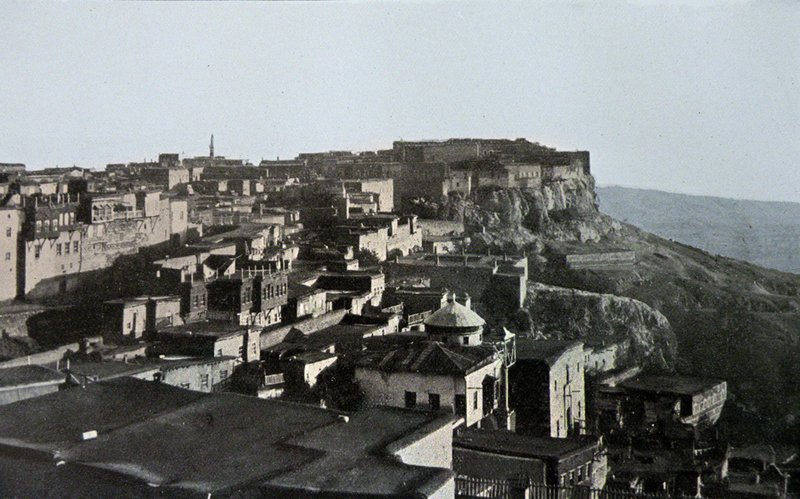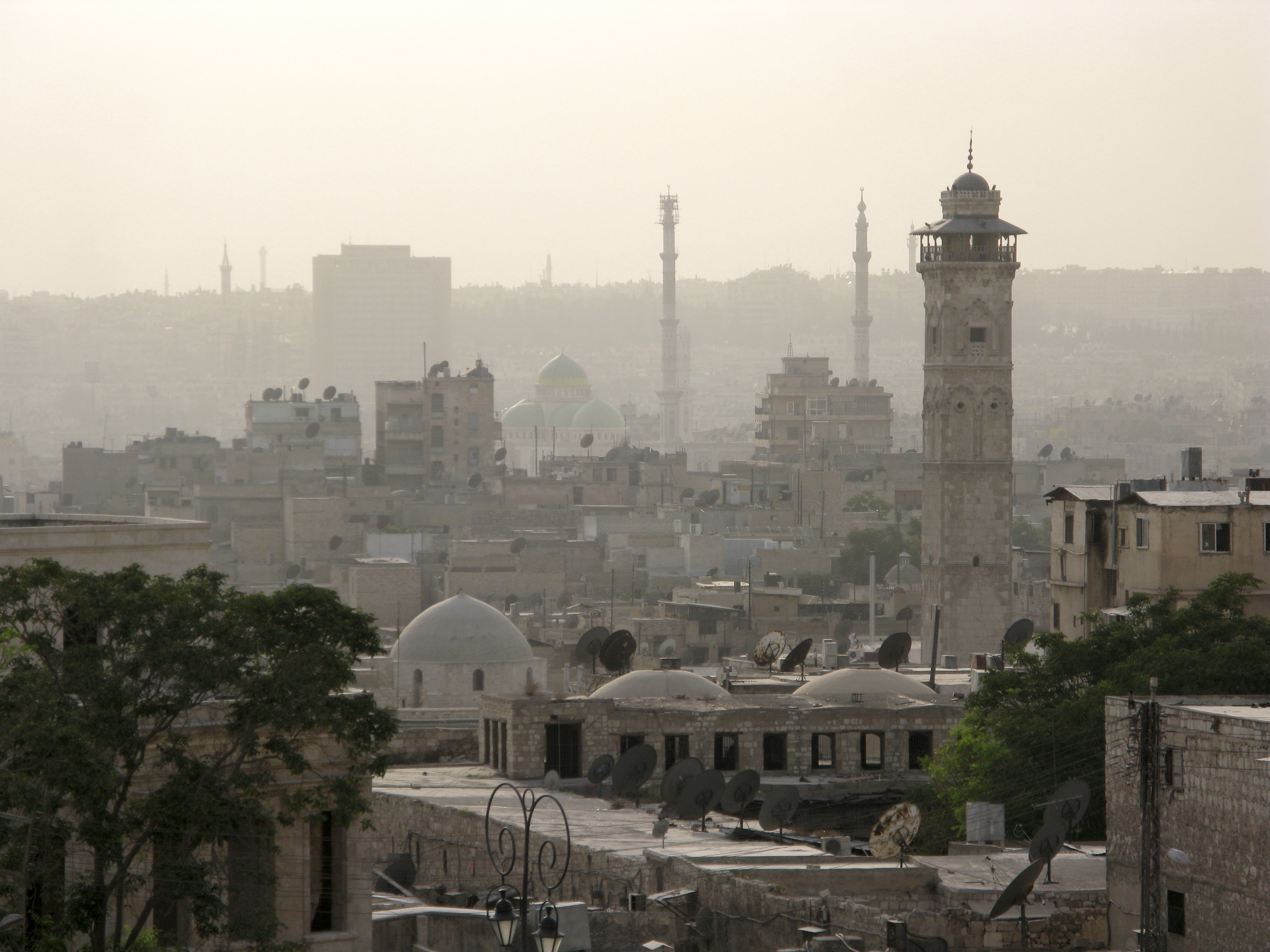|
Artukid
The Artuqid dynasty (alternatively Artukid, Ortoqid, or Ortokid; , pl. ; ; ) was a Turkoman dynasty originated from tribe that ruled in eastern Anatolia, Northern Syria and Northern Iraq in the eleventh through thirteenth centuries. The Artuqid dynasty took its name from its founder, Artuk Bey, who was of the Döger branch of the Oghuz Turks and ruled one of the Turkmen beyliks of the Seljuk Empire. Artuk's sons and descendants ruled the three branches in the region: Sökmen's descendants ruled the region around Hasankeyf between 1102 and 1231; Ilghazi's branch ruled from Mardin and Mayyafariqin between 1106 and 1186 (until 1409 as vassals) and Aleppo from 1117–1128; and the Harput line starting in 1112 under the Sökmen branch, and was independent between 1185 and 1233. History The dynasty was founded by Artuk, son of Eksük, a general originally under Malik-Shah I and then under the Seljuk emir of Damascus, Tutush I. Tutush appointed Artuk governor of Jerusalem in 10 ... [...More Info...] [...Related Items...] OR: [Wikipedia] [Google] [Baidu] |
Harput
Harpoot ( tr, Harput) or Kharberd ( hy, Խարբերդ, translit=Kharberd) is an ancient town located in the Elazığ Province of Turkey. It now forms a small district of the city of Elazığ. p. 1. In the late Ottoman period, it fell under the Mamuret-ul-Aziz Vilayet (also known as the Harput Vilayet). Artifacts from around 2000 BC have been found in the area. The town is famous for its Harput Castle, and incorporates a museum, old mosques, a church, and the Buzluk (Ice) Cave. Harput is about from Istanbul. Harput was a largely Armenian populated region in medieval times and had a significant Armenian population until the Armenian genocide. By the 20th century, Harput had been absorbed into Mezre (renamed Elazığ in 1937), a town on the plain below Harput that significantly grew in size in the 19th century. Name Kharberd was first interpreted as consisting of the Armenian words ''kʻar'' ("rock") and ''berd'' ("castle, fortress"), as if meaning "a fortress surrounded by ... [...More Info...] [...Related Items...] OR: [Wikipedia] [Google] [Baidu] |
Ilghazi
Najm ad-Din Ilghazi ibn Artuq (died November 8, 1122) was the Turkmen Artukid ruler of Mardin from 1107 to 1122. He was born into the Oghuz tribe of Döğer. Biography His father Artuk Bey was the founder of the Artukid dynasty, and had been appointed governor of Jerusalem by the Seljuq emir Tutush. When Artuk died, Ilghazi and his brother Sökmen succeeded him as governors of Jerusalem. In 1096, Ilghazi allied with Duqaq of Damascus and Yaghi-Siyan of Antioch against Radwan of Aleppo; Duqaq and Radwan were fighting for control of Syria after the death of Tutush. Ilghazi and Dukak eventually quarrelled and Ilghazi was imprisoned, leading to the capture of Jerusalem by his brother Sökmen, but Ilgazi recovered the city when he was released. He held it until the city was captured by the Fatimid vizier of Egypt, al-Afdal Shahanshah, in 1098. After this he sought to make a name for himself in the Jezirah, where his brothers had also established themselves. He then entere ... [...More Info...] [...Related Items...] OR: [Wikipedia] [Google] [Baidu] |
Hasankeyf
Hasankeyf ( ar, حصن كيفا, translit=Ḥiṣn Kayfa‘, ku, Heskîf, hy, Հասանքեյֆ, translit=, el, Κιφας, translit=Kifas, lat, Cepha, syr, ܚܣܢܐ ܕܟܐܦܐ, Ḥesno d-Kifo) is a town and district located along the Tigris River in the Batman Province of southeastern Turkey. It was declared a natural conservation area by Turkey in 1981. Despite local and international objections, the city and its archaeological sites have been flooded as part of the Ilısu Dam project. By 1 April 2020, water levels reached an elevation of 498.2m, covering the whole town. Toponymy Hasankeyf was an ancient settlement that has borne many names from a variety of cultures during its history. The variety of these names is compounded by the many ways that non-Latin alphabets such as Syriac and Arabic can be transliterated. Underlying these many names is much continuity between cultures in the basic identification of the site. The city of ''Ilānṣurā'' mentioned in the A ... [...More Info...] [...Related Items...] OR: [Wikipedia] [Google] [Baidu] |
Mardin
Mardin ( ku, Mêrdîn; ar, ماردين; syr, ܡܪܕܝܢ, Merdīn; hy, Մարդին) is a city in southeastern Turkey. The capital of Mardin Province, it is known for the Artuqid architecture of its old city, and for its strategic location on a rocky hill near the Tigris River that rises steeply over the flat plains. The old town of the city is under the protection of UNESCO, which forbids new constructions to preserve its façade. History Antiquity and etymology The city survived into the Syriac Christian period as the name of Mt. Izala (Izla), on which in the early 4th century AD stood the monastery of Nisibis, housing seventy monks. In the Roman period, the city itself was known as ''Marida'' (''Merida''), from a Neo-Aramaic language name translating to "fortress". Between c. 150 BC and 250 AD it was part of the kingdom of Osroene, ruled by the Abgarid dynasty. Medieval history During the early Muslim conquests, the Byzantine city was captured in 640 by t ... [...More Info...] [...Related Items...] OR: [Wikipedia] [Google] [Baidu] |
Artuk Bey
Zaheer-ul-Daulah Artuk Beg, known as Artuk Bey, was a Turkmen commander of the Seljuk Empire in the 11th century, chief of the Oghuz tribe of Döğer, and eponymous founder of the Artuqid dynasty. His father's name was Eksük. He was the Seljuk governor of Jerusalem between 1085–1091. Although the Artuqid dynasty was named after him, actually the dynasty was founded by his sons Sökmen and Ilghazi after his death. He was also father to Alp-Yaruq, Bahram, Abd al-Jabar, and three other sons. In Anatolia Artuk Bey was one of the commanders of the Great Seljuk Empire army during the Battle of Manzikert in 1071. After the battle, he took part in the conquest of Anatolia on behalf of the Seljuk Empire. He captured the Yeşilırmak ( grc, Ἶρις) valley in 1074. In 1075, Artuk captured on behalf of the Byzantine Empire the Norman rebell Roussel de Bailleul and handed him over to the future emperor Alexios Komnenos. He also served the sultan by quashing a rebellion in 1077 ... [...More Info...] [...Related Items...] OR: [Wikipedia] [Google] [Baidu] |
Döğer (tribe)
Tüger, Döğer, Dogar or Deogers (, , tk, Tüwer taýpasy) was one of the 24 Oghuz tribes from the Bozok wing, the tribe of Ay Khan. According to Mahmud Kashgari, it was the eighteenth biggest tribe among the Oghuz tribes. The Turkoman dynasty of Artuqids, which ruled the Beylik of same name, originated from the tribe of Döger. History In the pre-Islamic era, Dogers occupied an important place. Also, they played a significant role as warriors in the Seljuk army during the latter's conquest of Iran and Anatolia. The dynasty of Turkoman origin, the Artukids, derived from the Doger tribe as well. Dogers had tremendous influence among the Turkomans for centuries and were considered a noble tribe. They lived under the leadership of Salim Beg Doger in the territory of the present-day Syria, and their beylik (principality) was constantly attacked by the Kara Koyunlu and Mamluks. The Doger tribe, who mostly lived in Northwestern Syria and was associated with both Kara Koyu ... [...More Info...] [...Related Items...] OR: [Wikipedia] [Google] [Baidu] |
Turkoman (ethnonym)
Turkoman (Middle Turkic: تُركْمانْ, ota, تركمن, Türkmen and ''Türkmân''; az, Türkman and ', tr, Türkmen, tk, Türkmen, Persian: ترکمن sing. ''Turkamān'', pl. ''Tarākimah''), also called Turcoman and Turkman, is a term that was widely used during the Middle Ages for the people of Oghuz Turkic origin. Oghuz Turks were a western Turkic people that, in the 8th century A.D, formed a tribal confederation in an area between the Aral and Caspian seas in Central Asia, and spoke the Oghuz branch of the Turkic language family. ''Turkmen'', originally an exonym, dates from the High Middle Ages, along with the ancient and familiar name " Turk" (), and tribal names such as " Bayat", "Bayandur", " Afshar", " Kayi", and others. By the 10th century, Islamic sources were calling Oghuz Turks as Muslim Turkmens, as opposed to Shamanist or Buddhist Turks. It entered into the usage of the Western world through the Byzantines in the 12th century, since by that time Oghuz ... [...More Info...] [...Related Items...] OR: [Wikipedia] [Google] [Baidu] |
Aleppo
)), is an adjective which means "white-colored mixed with black". , motto = , image_map = , mapsize = , map_caption = , image_map1 = , mapsize1 = , map_caption1 = , pushpin_map = Syria#Mediterranean east#Asia#Syria Aleppo , pushpin_label_position = left , pushpin_relief = yes , pushpin_mapsize = , pushpin_map_caption = Location of Aleppo in Syria , coordinates = , subdivision_type = Country , subdivision_name = , subdivision_type1 = Governorate , subdivision_type2 = District , subdivision_type3 = Subdistrict , subdivision_name1 = Aleppo Governorate , subdivision_name2 = Mount Simeon (Jabal Semaan) , subdivision_name3 = Mount Simeon ... [...More Info...] [...Related Items...] OR: [Wikipedia] [Google] [Baidu] |
Sökmen Of Artukids
Sökmen is a Turkish Turkish may refer to: *a Turkic language spoken by the Turks * of or about Turkey ** Turkish language *** Turkish alphabet ** Turkish people, a Turkic ethnic group and nation *** Turkish citizen, a citizen of Turkey *** Turkish communities and mi ... given name or surname. Notable persons with that name include: Given name * Sökmen (Artuqid) (died 1104), Turkish bey * Sökmen el-Kutbî (died 1111), Turkish bey * Sökmen II (died 1185), Turkish ruler Surname * Ayhan Sökmen (1929–2013), Turkish physician * İhsan Sökmen (1873–1955), Turkish soldier and politician * Tayfur Sökmen (1892–1980), Turkish politician See also * Sökmen, Çivril {{DEFAULTSORT:Sokmen Turkish-language surnames Turkish masculine given names ... [...More Info...] [...Related Items...] OR: [Wikipedia] [Google] [Baidu] |
Seljuk Empire
The Great Seljuk Empire, or the Seljuk Empire was a high medieval, culturally Turko-Persian, Sunni Muslim empire, founded and ruled by the Qïnïq branch of Oghuz Turks. It spanned a total area of from Anatolia and the Levant in the west to the Hindu Kush in the east, and from Central Asia in the north to the Persian Gulf in the south. The Seljuk Empire was founded in 1037 by Tughril (990–1063) and his brother Chaghri (989–1060), both of whom co-ruled over its territories; there are indications that the Seljuk leadership otherwise functioned as a triumvirate and thus included Musa Yabghu, the uncle of the aforementioned two. From their homelands near the Aral Sea, the Seljuks advanced first into Khorasan and into the Iranian mainland, where they would become largely based as a Persianate society. They then moved west to conquer Baghdad, filling up the power vacuum that had been caused by struggles between the Arab Abbasid Caliphate and the Iranian Buyid Empire. T ... [...More Info...] [...Related Items...] OR: [Wikipedia] [Google] [Baidu] |






